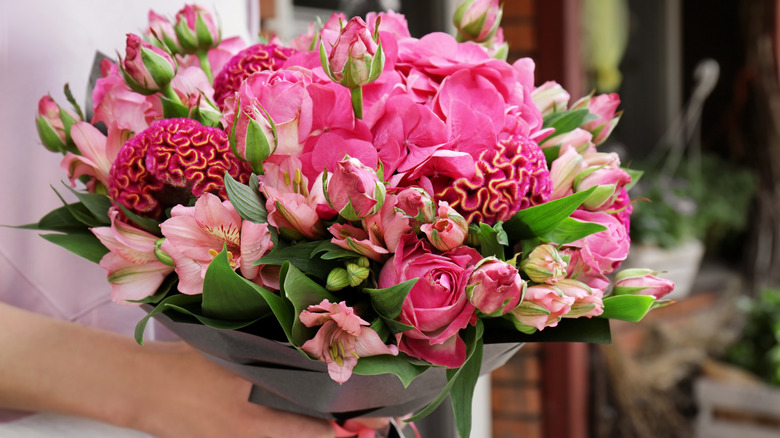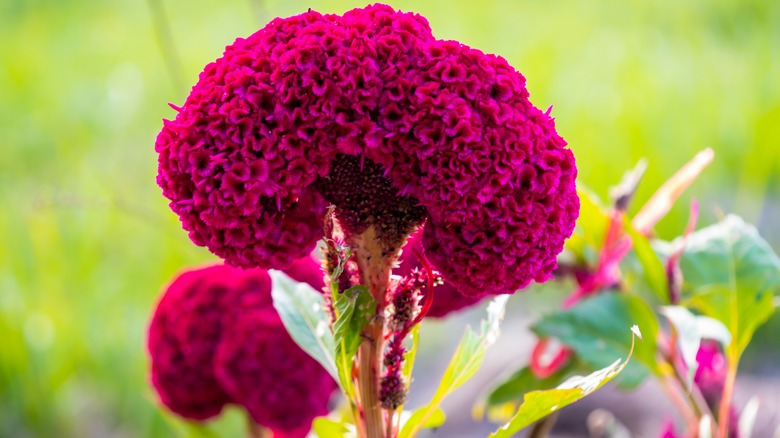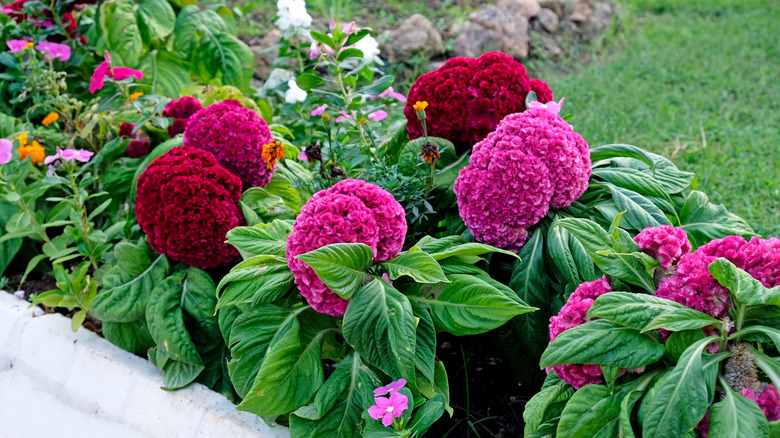The Velvety Flower That'll Add Color To Your Garden (And Tolerates Dry Soil)
While spike and rosette-shaped flowers are classic and elegant, there's a lot to be said for adding something just a little different to your garden and floral bouquets. Growing cockscomb flowers that look more like coral or brains than traditional flowers can add a magical touch to your landscape and bouquets. Not only is cockscomb easy to grow and drought tolerant, but it also pairs beautifully with other flowers, both in the landscape and in fresh and dried bouquets.
Cockscomb celosia (Celosia argentea var. cristata) is actually the same species as plume types of celosia, and both cultivars are closely related to amaranth, an easy-to-grow flower with a large Pinterest following. Like its relative amaranth, it isn't difficult to grow and care for cockscomb celosia, as long as you remember it isn't cold hardy, and in zones 2 through 9 it should be grown as a warm season annual. Because many varieties of cockscomb celosia need at least 90 to 120 days to reach maturity, it's best to start the seeds inside and transplant the seedlings outdoors once all danger of frost has passed, especially if you live in an area with a short growing season.
Growing celosia in the garden
When you're getting ready to transplant your cockscomb celosia outside, be sure to plant it in a good location where it gets either full or dappled sun. Celosia grows in a surprising range of soil conditions and can tolerate poor soil, but it grows best in well-draining soil with plenty of organic material. Because many celosia varieties can grow several feet tall, it is important to provide support for your plants using either stakes or netting. Alternatively, you can choose a dwarf celosia variety. These smaller varieties may not work for cut flowers, but they make beautiful bedding and landscape plants.
While cockscomb celosia is relatively drought tolerant once fully established, large varieties often require regular watering to prevent their leaves from drooping. The University of Minnesota Extension recommends fertilizing your celosia with a balanced fertilizer at planting and then monthly with a phosphorus-heavy fertilizer. Celosia easily self-seeds, but it is not considered aggressive or invasive, and any unwanted seedlings can be removed without issue. Staying on top of deadheading in the garden will also limit the number of seeds that the plants drop.
Using cockscomb celosia in landscapes and bouquets
Dwarf celosia varieties like Jessica mix, which don't grow taller than a foot and a half, are excellent options for the front of borders. Cockscomb celosia is available in a variety of colors, including orange, red, yellow, and pink, so you're sure to find some that are a perfect fit for your garden's color palette. Whether you opt for a mass planting of these distinctive flowers or intersperse them with plants like sweet alyssums to provide contrast, they're sure to turn heads and attract both compliments and pollinators.
If you're growing cockscomb celosia primarily for cut flowers, then taller cultivars like Cramer's varieties and coral reef may be better options. Not only does celosia have an excellent vase life of at least a week, but it also holds its color when dried. Just hang it upside down in a warm and dark space for a few weeks and then you're ready to make a dried flower bouquet.


